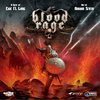 Blood Rage
Blood Rage
Publisher: Cool Mini or Not
Format: Board Game
Number of Players: 2-4
Play Time: 1-2 Hours
Price: $80
Copy purchased by reviewer
The world of board games can be a funny place; it’s a hobby that many remember as childish, a way to pass the time with brightly colored cardboard and simple luck. It was something that you were expected to grow out of, or participate in only when you had children of your own. Now, board games have exploded in popularity and complexity, spilling over into our adult lives.
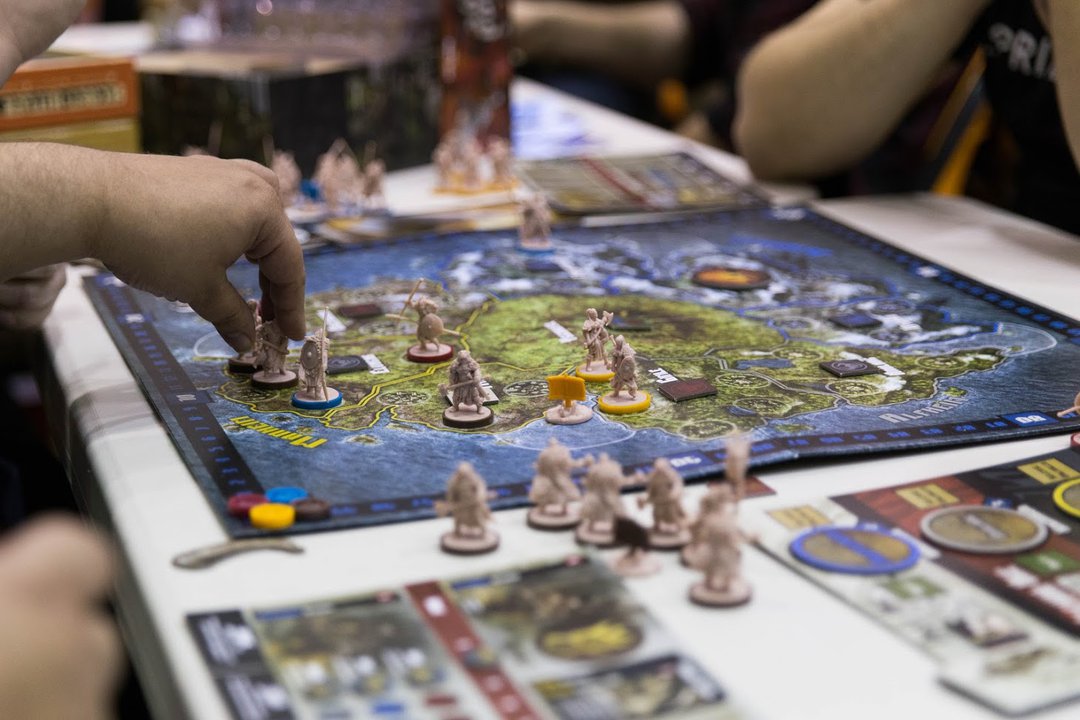
Blood Rage was an experiment to take the ideas of Risk and improve on them. How do you take a game that is dominated by luck and run-away win conditions, and make it feel fair and balanced?
The Premise: How To Enjoy The End Of The World
The idea behind Blood Rage is simple: the end of the world is here, so might as well show everyone that you are the coolest clan of Vikings around. You do this by raiding territory, getting into fights, and appeasing the gods in a dozen different ways.That last part is key, and where Blood Rage takes its first massive deviation from its ancestor: the game isn’t won by control of the board, but instead through the earning of Glory (victory points). The outside of the board is a chart to keep track of your victory points, and you have ONLY three rounds to get that number as high as you possibly can. While you can work for Glory by dominating the territories on the map with warriors, that isn’t the only way to win - not even close. As a matter of fact, one of the best ways to get points in the game is by having your warriors die as Ragnarok destroys a part of the board.
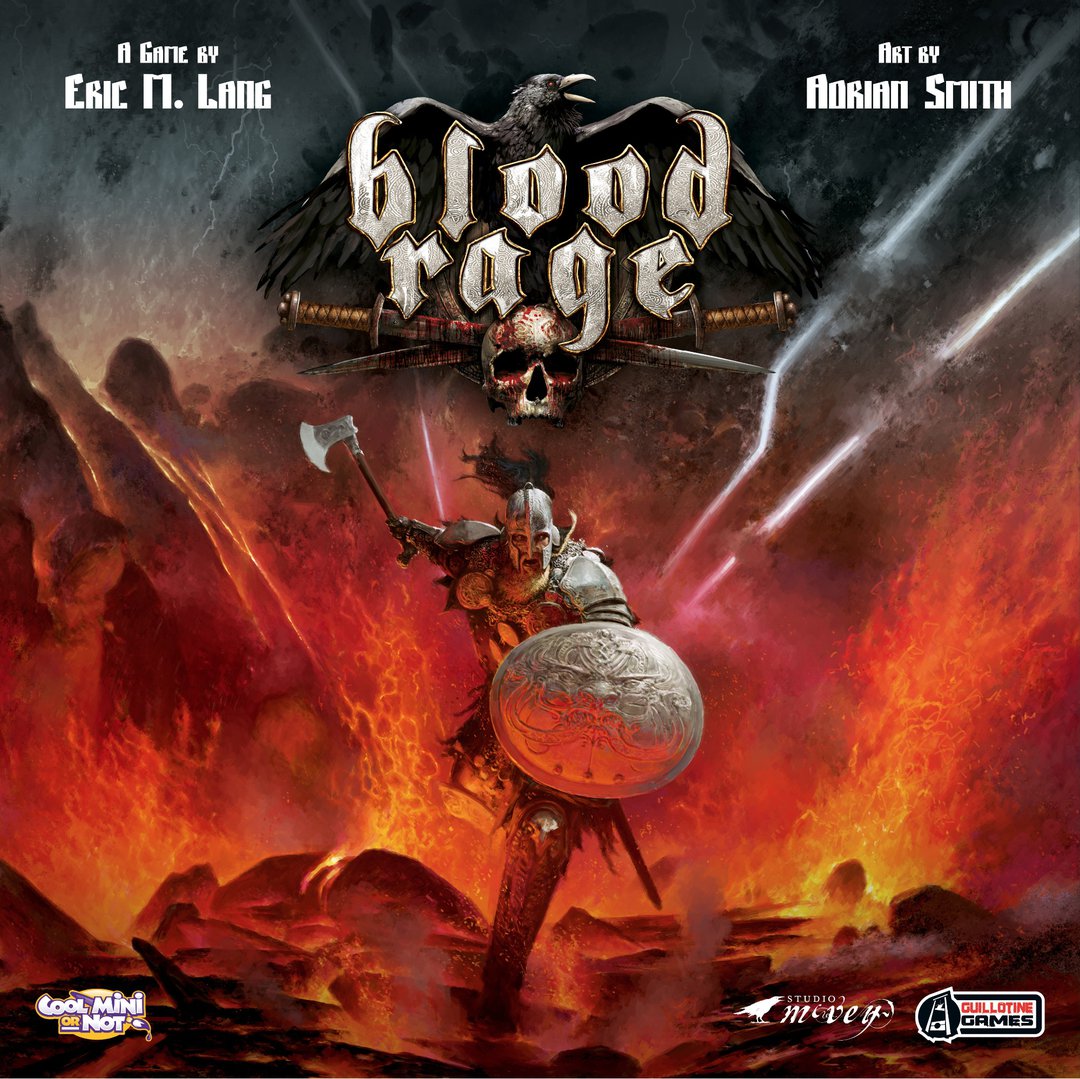
Let me say that again: each round, after you play cards to upgrade your clan or destroy others in glorious combat, you take a moment to reset your hand, score quests you’ve played earlier that turn, and then blow up a portion of the map. One zone out of only a handful is consumed by Ragnarok, consuming everyone there in a fiery wail of the end times. However, players will often purposefully stack that zone with characters for a very important reason: characters that die in Ragnarok score you Glory. As your warriors die horrifically, you can net a chunk of victory points that could jump you into the lead, something I saw more than once while reviewing this game.This mechanic is the main example of how Blood Rage turns the typical territory-control setup on its head. It's not all about building armies and holding land. Instead, the Ragnarok effect serves to show how many different ways you can work toward a win. It also adds a really weird, but really fun theme to the entire affair. Your clan isn’t trying to take over the world, but is reveling in their last moments in order to pass on to a rowdy afterlife.
The Basics: More Than One Way To Get To Valhalla
To start the game you choose which clan you'll play, figure out how many people are playing, and set up the board. The board setup changes based on how many people are in game: There are only nine zones, and either one or several zones will be destroyed by Ragnarok before the game even begins. It’s a smart way to balance the game right out of the gate, because you’ll notice that the board itself doesn’t have a lot of places to run. You can’t amass forces somewhere safe like, say, Australia in Risk. In Blood Rage, combat is inevitable.
The clans start on equal footing with identical statistics and abilities, but that changes very quickly. There are only three turns, but each is packed with a lot of mayhem and a lot of player interaction. The first phase every round is the drafting stage, where every player is given eight cards randomly. However, instead of keeping what you have, you choose just one card, and then pass the rest to the side. You keep going until everyone has six cards for a hand, and discard the rest.
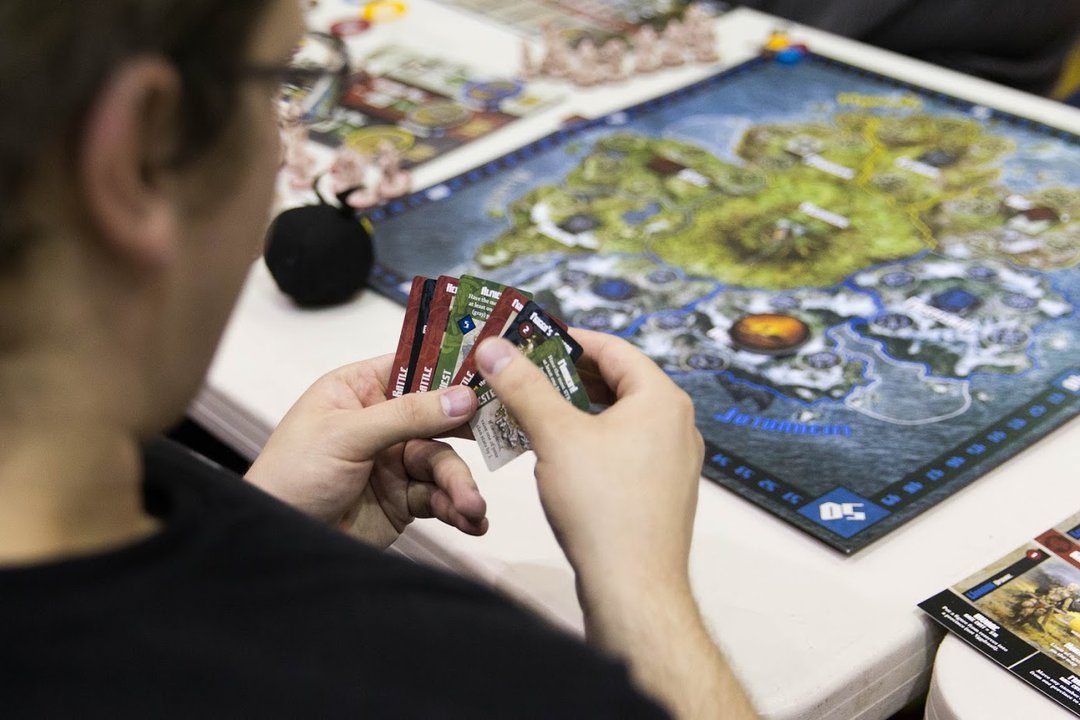
Knowing which cards to keep to take advantage of the board is essential to victory
This card drafting immediately creates an interesting scenario. The cards you get can be upgrades that improve your options as a clan, quest cards which can be used to score Glory in a turn by achieving particular goals, or battle cards, which are used instead of dice to determine combat. Because you are drafting cards, you see most of the cards being passed around the table, and so you get an idea of what is going to be in your opponent’s set of tricks during the game.It is also important to note that most cards are titled with the name of a norse god, and this is done deliberately. Each god has a particular ‘style’ which most people know thanks to a fascination with vikings, or certain Marvel movies: Thor cards revel in having high combat bonuses and getting extra Glory through picking fights, for example. Heimdall, the watcher, loves using cards that let him bend combat to his favor by getting more insight into what everyone else is playing, and Loki enjoys watching his own models die horribly. I’m serious. More on that in a minute.
During the action phase, you take your chosen cards and start putting them to use, either through improving your clan, laying down hidden quest cards, or ‘invading’, which is actually putting down characters to the board itself. Once you have characters on the board, you can pillage regions for statistic buffs or glory, with each zone only being able to be pillaged once a turn. These stat buffs are vital to growing your clan between the turns, and again, create more reason for conflict. You can let an opposing solitary warrior in a zone get away with getting a stat buff, but that might let your opponent get a resource advantage later on. You can also choose to place your own invading characters in the same zone, but this inevitably leads to escalation, and a fight.
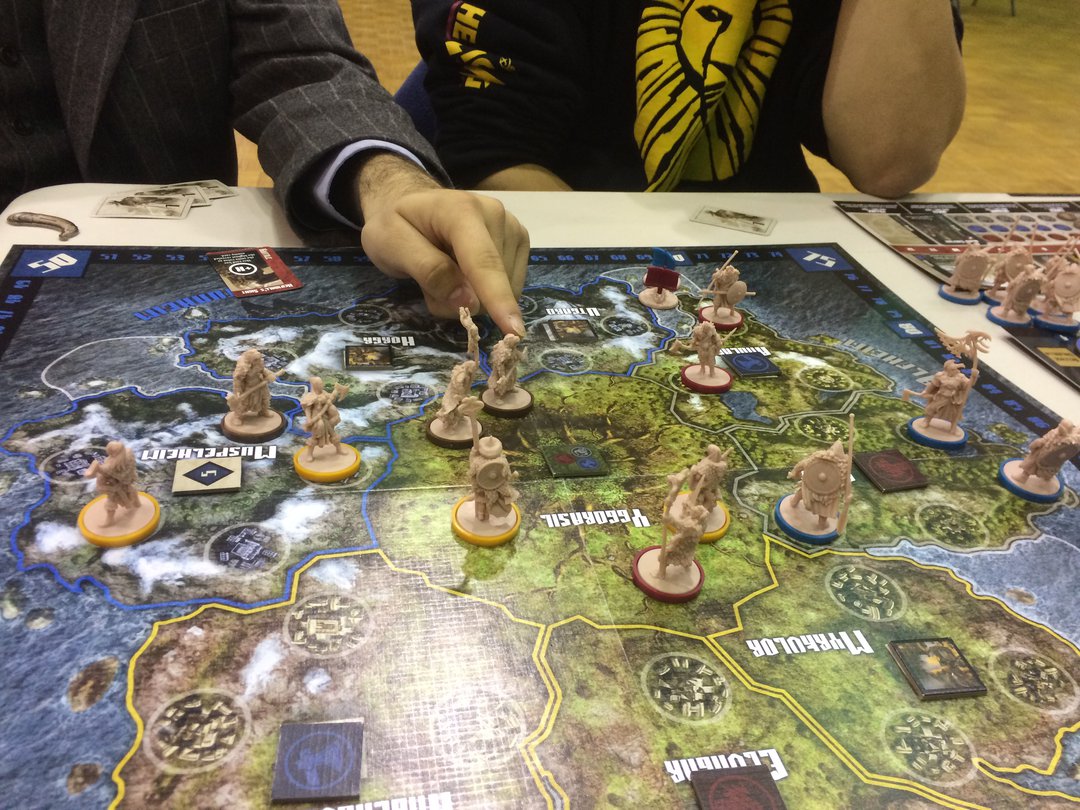
When someone pillages and another player has warriors in that same zone or an adjacent one (if they choose), a fight breaks out. Fights are determined by totaling up the strength of the warriors, then each person adds a battle (red) card from their hand, face down. Again, these cards are dictated by the gods: some are just raw bonuses, others will start a fight by destroying some of the miniatures involved in the chaos, and Loki’s cards will purposefully lose in order to leech bonuses from the winner. Everyone that loses has ALL of their miniatures to Valhalla; if there is a tie, that means every single creature in that fight dies.There are three clan statistics to keep track of: Rage, Axes, and Horns. Rage acts as your action points during the action phase of the game, Axes give you more Glory when you win fights, and Horns let you keep more miniatures on the board at a time. Each statistic can be increased by pillaging the individual zones of Blood Rage, or by completing quests (usually, but not always, through zone control), and each statistic lends itself to a particular style of play. Rage allows you to play more character upgrades to your clan, as well as recruit more expensive miniatures to ‘invade’ the board. Axes lets you revel in combat, getting a bulk of your game-winning glory by annihilating anyone near you, and Horns allows you to try and win through numbers, keeping more and more characters on the board to edge out your opponents.Once the actions are all completed and everyone has run out of rage, you check for quest completion, watch as one section of the board disintegrates into oblivion, and then get your heroes back from Valhalla to try again for the next era.
The Good: The Apocalypse Is A Party With Great Bar Fights
Blood Rage is a greatly improved wargame, made fun and accessible for many different approaches and playstyles. It smartly forces you to stay aware of your opponents and keep an eye on their tactics. Every clan starts the same with statistics, but by turn three they are wildly different, and the differences dictate how they are going to approach the board. If you see that your opponent has focused on getting his Axes statistic high, then you know combat is inevitable. If your friend has a lot of Loki upgrades on his clan, you know they are purposefully going to try and lose.Going back to Loki: one of the best things about Blood Rage is how each character can try to win in completely different ways. When characters die, they are sent to Valhalla to wait until the next turn to be used. This is usually bad, since you spend rage and time trying to get your characters to the board, but Loki’s upgrades let you get glory when they leave Valhalla. I have seen massive fights break out where eight models are wiped off the board, and one player gains a massive amount of glory for victory, while one of the losers makes nearly as much because they gleefully sent their own models to that slaughter.
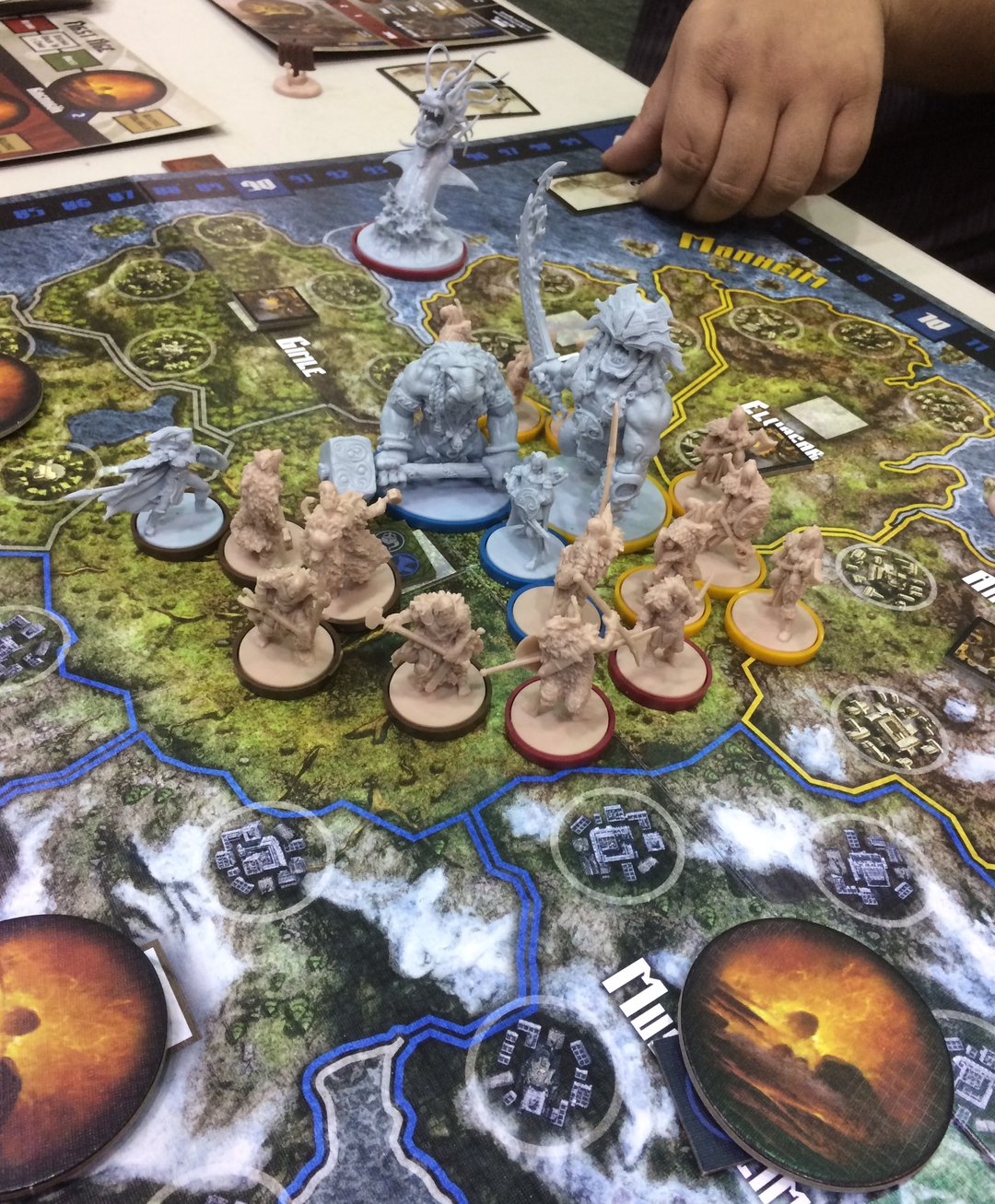
That center zone is a lure that will cause fights... massive, army-crushing fights.
Combat is exciting. It feels like a brawl that is always getting out of hand, and that’s a good thing. Your typical warriors are great miniatures to field, but they are dwarfed by the sometimes ridiculous monsters you can draft in as upgrades to throw into battle. Fire giants instantly demolish smaller beings, while sneaky dark elves or dwarves can upset battles. The addition of norse ships sailing up and down the fjords is a nice touch, and because they threaten two areas at once, are a great way to keep tensions high on the nowhere-to-run board. As I said before, fights are impossible to avoid, but Blood Rage rewards players that can control the action.
One of the greatest parts of this game is how every player can get drawn into a fight. The best example of this is the Yggdrasil zone, which is at the center of the board adjacent to all other spaces, and has no model limit for who is allowed in. This means that nearly every character can move into this zone when a pillage action is taken, and you have no idea how massive the fight will become. It's worth the risk, though, because whoever wins that brawl gets a boost to all three stats. When you are playing with four players, the melees can often become dramatic moments that leave people shouting and gesturing wildly depending on who ends up on top.
Yet, at the same time, the game doesn’t fall apart when there are just two players; Blood Rage states how many provinces to blow up at the start of a game based on amount of players, so the board always feels the right size to cause conflict. Limiting the board space makes sure that players are forced into conflict, and keeps the action moving. Smaller games are short and sweet as well; I was able to play a two-player game with Zoë in under an hour, and that includes the set up time. In fact, in comparison to previous games like Risk, Blood Rage comes out on top because it is a much shorter experience: the game simply isn't long enough to make fights become drawn out, and so player-vs-player resentment is less likely to build playing this.
Finally, it should be said: the game looks great in motion. Cool Mini or Not is a company that prides itself on making paintable sculpts for their games, but they are also made so that they will stand out without any extra work being put into them. The monsters tower over the regular warriors, and the components in the box all stand out from each other well. It’s a joy to see a fully packed game board in action.
The Nitpicks: The Apocalypse is Expensive
One of the few major drawbacks to Blood Rage is the entry price. For $80, this Nordic end-of-world scenario is a large hit to the wallet. Granted, this is a Cool Mini or Not game, and so for that price you are getting a metric ton of miniatures and components of solid quality. Still, this is a purchase that is better made knowing that you have a group of friends that will want to play this alongside you first. Also, as usual with Cool Mini or Not games, packaging can sometimes be frustrating; once you open up all the tokens, it’s hard to find a place to fit them all into the base box. It’s a minor annoyance, but dedicated collectors will end up wanting to purchase a dividing set from Broken Token, or another way to store everything more quickly and easily.
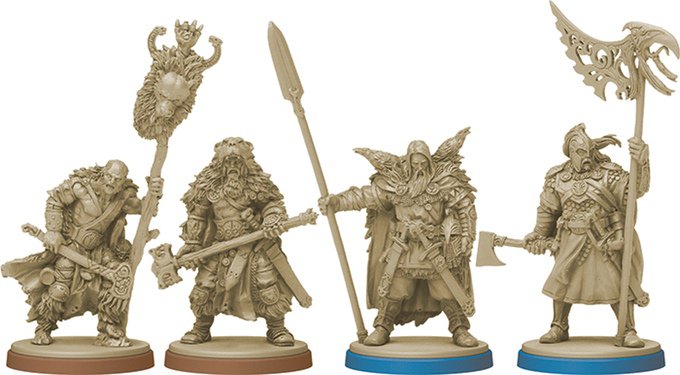
The sculpts are great, but you do pay for the pleasure.
As I said before, Blood Rage removes one of the major downsides of other wargames – runaway wins – by making games only three turns long. That being said, I have found that multiplayer games can end up with one person in dead last, and not by a small amount. It can be because they weren’t able to up their rage statistic early, or because they were ganged up on, but occasionally, I have seen someone get beat, and get beat badly. Again, because games are relatively short, this isn’t as large an issue as previous territory-control games, but it’s something to consider when breaking it out with new players.
Blood Rage Proves Game Design Is Getting Smarter
I’ve played this game with over 12 different people now, and everyone I’ve introduced it to not only likes it, but also truly appreciated the design choices behind the mechanics itself. You have the great theme of raiding Vikings blended with the urgency of global apocalypse. You have the urge of dominance and board control of Risk combined with the deck drafting of Magic: The Gathering.This hybridization doesn’t take away from any one element of the game, but instead makes a cohesive whole that makes it so every player has a way to get involved. Some players love the control and planning of drafting their hands, while others enjoy the management of territory and resources on the map. Meanwhile, some players just like causing the biggest fights they can, and seeing who ends up on top.
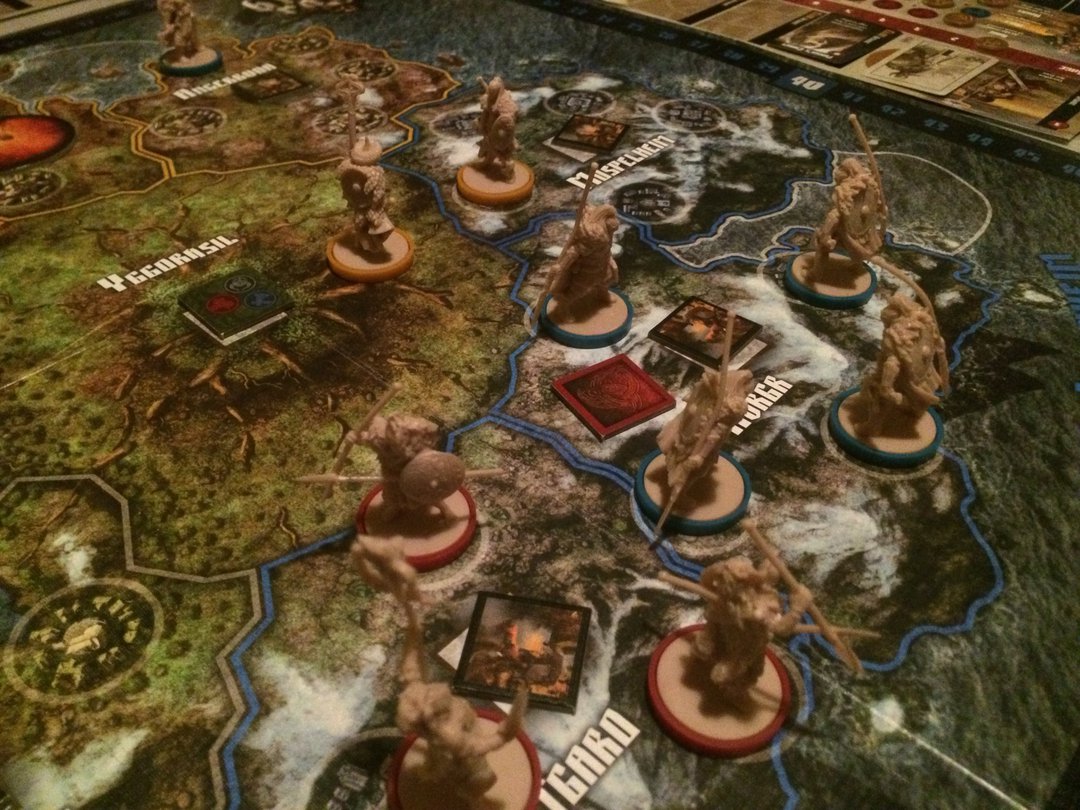
As I’ve now spent a few years reviewing board games with a more critical angle, I’ve discovered that people can enjoy a game while still finding it flawed, and you can appreciate a game that’s been designed to be ‘perfect’, and yet somehow just isn’t fun to play. Blood Rage has found a happy medium in a way that actually shocked me in its brilliance; this conflict-heavy game is messy and brutal in its player interaction while making sure that every player has a chance to get points in every fight. I’ve seen games where the person that loses every battle wins the game, and other matches where one clan stands victorious on Yggdrasil, taking on all others and racking up victory points in the process.
Blood Rage is proof to me that board games are getting smarter, getting better. I have enjoyed every time I've chosen a clan for the end times, and my friends now ask if I brought it along when we spend time together. Blood Rage is fun, exciting, and challenges you to not only be the sneakiest of your friends, but also be the most bold; it will be on my top shelf for a long, long time.
Like hearing your reviews instead of reading them? Check out our most recent podcast to listen to us critque the game as a group! Follow us on Facebook and Twitter to keep on top of all our most recent articles and board games, and if you have some comments about how we covered this very fun apocalypse, be sure to let us know.